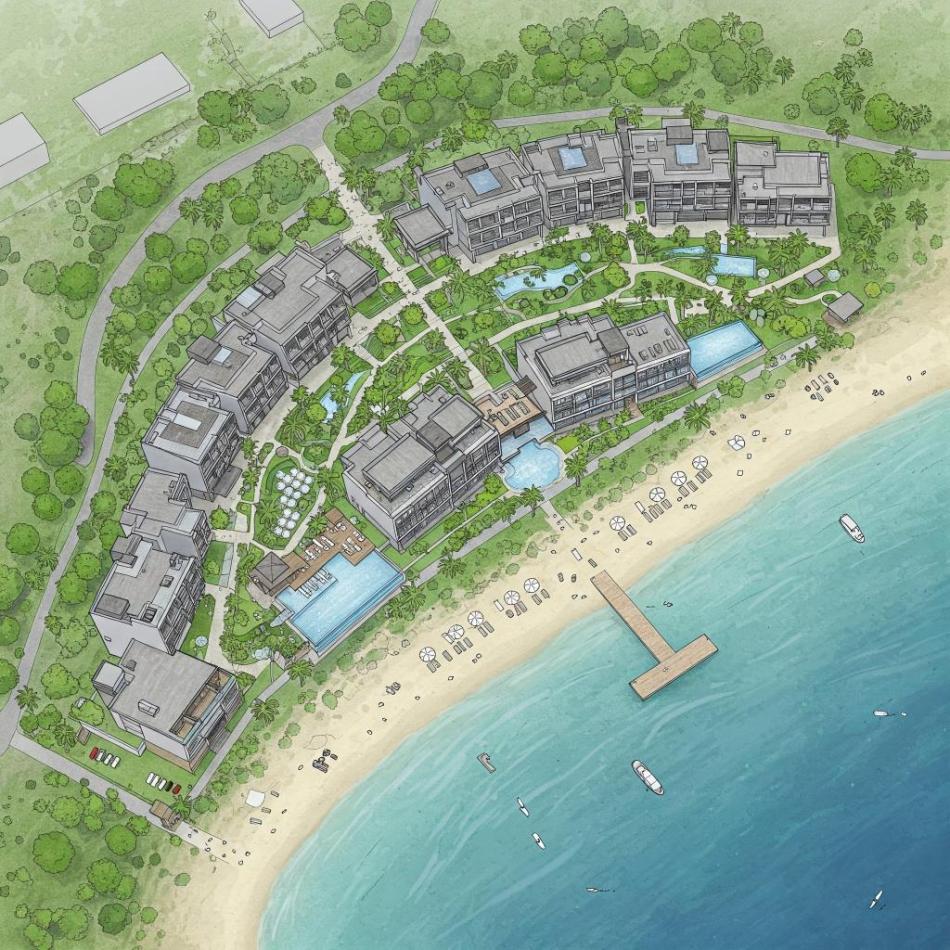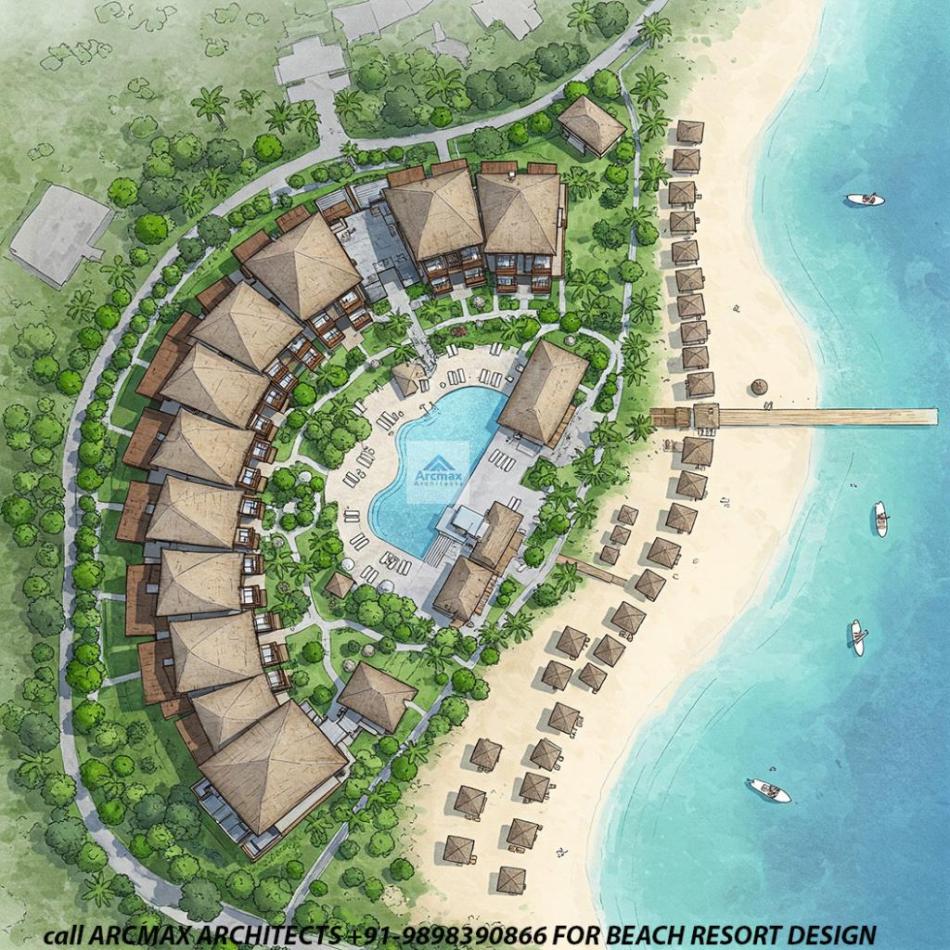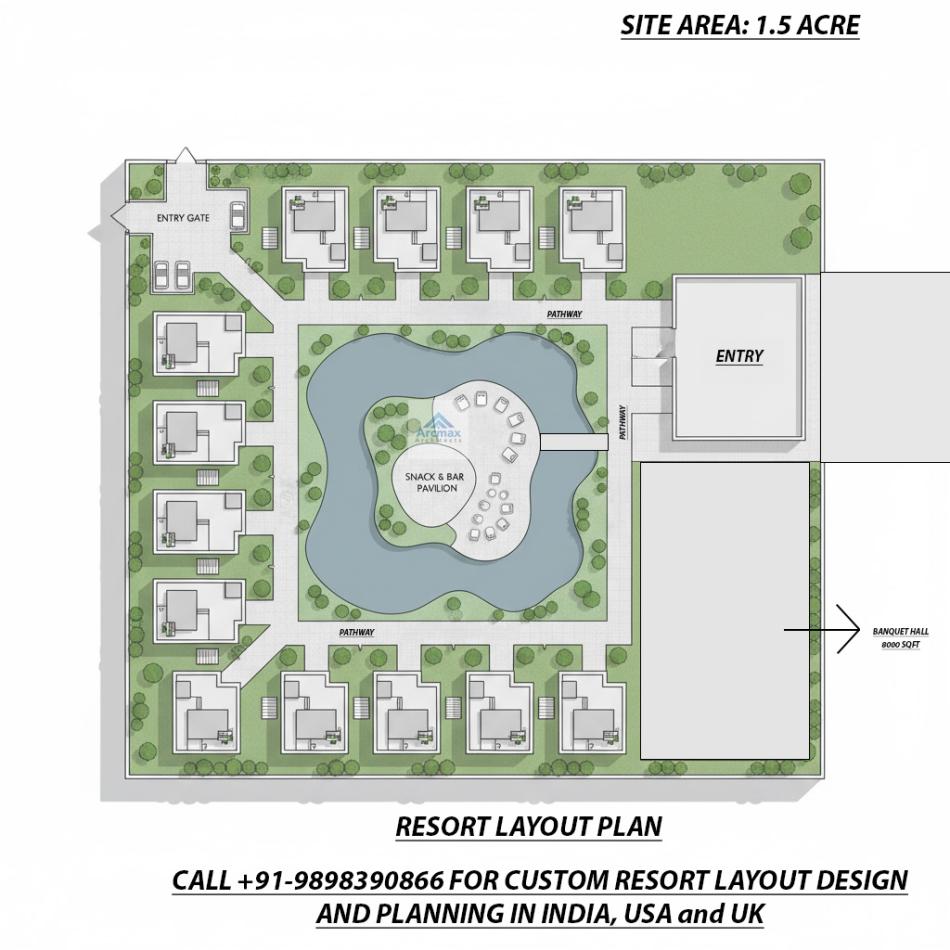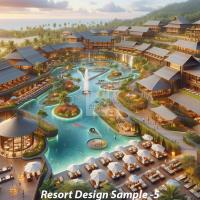Bakeri City, Pincode: 380015 Ahmedabad, Gujarat, India,
244 Madison Avenue, New York, United States
Our Client






Resort landscape architecture Design and Planning
Resort landscape architecture is a critical aspect of resort design, encompassing the planning, design, and management of outdoor spaces to create immersive, sustainable, and visually stunning environments for guests. This discipline focuses not just on aesthetic appeal but also on the functionality, ecological sustainability, and enhancement of the guest experience through the thoughtful integration of natural and built elements. Here's an overview of key considerations and strategies involved in resort landscape architecture:
1. Site Analysis and Contextual Design
The initial step involves a comprehensive site analysis to understand the topography, climate, vegetation, and cultural context of the resort location. This understanding allows landscape architects to design spaces that respect and enhance the natural features of the site, ensuring that the development is in harmony with its surroundings. Contextual design considers local materials, plant species, and architectural styles to create a cohesive and authentic experience.
2. Guest Experience and Journey
Creating a memorable guest experience is at the heart of resort landscape architecture. This involves designing a journey through the resort that stimulates the senses and creates a narrative tied to the location's natural and cultural heritage. Pathways, water features, gardens, and viewing areas are strategically placed to guide guests through a variety of landscapes, each designed to evoke different emotions and create lasting memories.
3. Sustainability and Environmental Stewardship
Sustainability is a fundamental principle in contemporary resort landscape architecture. This includes the use of native plantings that require less water and maintenance, sustainable water management practices such as rainwater harvesting and greywater recycling, and the incorporation of renewable energy sources. Landscape architects also work to protect and restore natural habitats and use materials and construction practices that minimize environmental impact.
4. Functional and Recreational Spaces
Beyond beauty, resort landscapes must be functional, accommodating a wide range of recreational activities and guest needs. This includes swimming pools, sports courts, outdoor dining areas, and children’s play areas, as well as tranquil spaces for relaxation and meditation. The design of these spaces must consider guest flow, accessibility, and the seamless integration of indoor and outdoor experiences.
5. Seasonal Variation and Maintenance
A well-designed resort landscape considers seasonal changes and maintenance requirements to ensure that the space remains vibrant and engaging year-round. This involves selecting plant species that provide seasonal interest, designing for ease of maintenance, and planning for the long-term growth and maturation of the landscape. The goal is to create a dynamic environment that evolves and changes, offering returning guests a fresh experience with each visit.
6. Privacy and Seclusion
In luxury resorts, privacy is a key consideration. Landscape architecture can create secluded spaces through the strategic use of plantings, terrain manipulation, and architectural elements like walls and pergolas. These private retreats allow guests to enjoy the natural beauty of the resort in solitude, enhancing the sense of exclusivity and relaxation.
7. Integration with Architecture and Infrastructure
Successful resort landscape architecture is seamlessly integrated with the architectural and infrastructural elements of the resort. This includes considering the placement and orientation of buildings, the design of pathways and roads, and the integration of utilities and lighting. The landscape not only complements the architecture but also functions as a critical component of the overall guest experience, blurring the lines between the built environment and the natural world.
8. Cultural and Ecological Sensitivity
Respect for the cultural and ecological context of the resort site is essential. This can involve using landscape design to tell the story of the local environment and culture, incorporating traditional gardening techniques, and using native plants to support local biodiversity. Landscape architects must work closely with local communities and ecologists to ensure that the resort enhances rather than detracts from the local environment and culture.
Resort landscape architecture is a complex, multidisciplinary practice that plays a crucial role in the success of a resort. By carefully balancing aesthetic appeal with functionality, sustainability, and the guest experience, landscape architects create spaces that are not only beautiful but also enriching, restorative, and deeply connected to the natural and cultural essence of the location.
Want a Quotation please fill the form
- Resort Master Planning
- Hospitality Design
- Resort Landscape Architecture
- Environmental and Sustainable Design
- Cultural and Thematic Resort Design
- Restaurant and Retail Design
- Waterfront and Beachfront Development
- Luxury and Exclusive Resorts
- Eco-Resorts and Retreats
- Adventure and Sports Resorts
- Heritage and Restoration Projects
- Resort Architecture Design


























































